In a previous article we touched on the value and importance of indirect fire in Bolt Action, and today I want to continue that discussion with what is really the most indirect fire that you can get – that is, support from off the table! Let’s take a look at the really big guns (and bombs, rockets, and all manner of things that go ‘boom’) available to your forces!
Because Bolt Action is primarily a platoon-level game of (mostly) infantry combat, the very heaviest weaponry of the Second World War has to remain somewhat below the ‘abstraction layer’ – sadly, it’s not practical to have batteries of huge howitzers, squadrons of dive-bombers, or entire battleships represented on the tabletop (unless anyone happens to have a spare sports hall and a lot of free time!). Long-range artillery and close air support were, however, absolutely central to the way in which the vast majority of the war was fought, and it is therefore important to find some way of allowing it to impact games. Enter the Forward Observer.
A Forward Observer (often referred to as a ‘FOO’ for ‘Forward Observation Officer’) is essentially the ‘eyes’ of a particular form of long-range firepower, be that artillery, close air support, or naval gunfire. Regardless of the exact type of support he’s calling on, his job remains more or less the same – deploy to the battlefield with the rest of the troops, identify a target that really needs to go away, radio in the targeting information… and then run like hell to get out of the blast radius! If he’s done his job right, a few moments later a large amount of high-explosive nastiness will arrive on target by express delivery, the enemy will cease to be, and the FOO can head home for tea and medals. If only it were always so easy on the Bolt Action tabletop!
Forward Observers in Bolt Action fall into one of two categories – Artillery and Air – and are available to the vast majority of armies, with some forces having their own unique national characteristics involving Forward Observers, which we’ll discuss in due time. At their core, both Air and Artillery FOOs function in basically the same way, and perform essentially the same role – causing a large area of the tabletop battlefield to be covered in explosions, Pin markers, and (hopefully) destroyed units!
Artillery Forward Observer
We’ll start with the Artillery Forward Observer, beloved of British players across the world (getting one for free tends to have that effect!). He’s the most common FOO to see on the tabletop, partly because of the aforementioned British special rule, and partly because the fire he’s calling in is usually slightly more predictable in location and effect than his airpower counterpart… usually! Artillery FOOs can often be surprisingly precise in where and when the bombardment they’ve called in lands, and this can be exploited to good effect, especially if your opponent is careless enough to bunch up a lot of their valuable units.
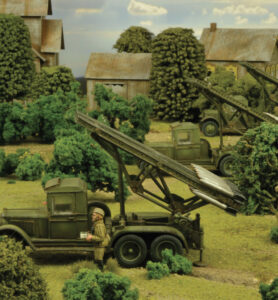
I’ve personally always found Artillery Observers best when used early – make use of their Forward Deployment ability to get them into a good vantage point, and as soon as you see a good concentration of enemy troops, get on the radio! The reason for using them early is twofold – firstly, armies can often be a little bit less spread out in the first couple of turns, meaning a greater chance of impacting a lot of units with one shot, and secondly because most players will at the very least take notice of the little marker that says “you don’t want to be stood here at the end of the turn”! This gives you an excellent opportunity to force your opponent to move their units into potentially disadvantageous spots early on to avoid the incoming rounds, which you can then exploit! If they don’t get out of the way, then they can look forward to a large portion of their force being either heavily Pinned, or very, very dead.
For those maniacs who consider a 4.5″ howitzer to be a ‘small’ gun, D-Day: Overlord introduces the frankly bonkers Naval Forward Observer. Think of him as essentially the same as a standard Artillery Forward Observer… only much, much more powerful. There’s nothing quite like having a slack handful of 15- or 16-inch guns on call to cow your opponent into submission. Woe betide armoured forces as well – such is the power of the naval gunfire that it can even flip tanks over and out of the game entirely! While not particularly recommended for games outside of those where naval support was historically present, there’s no denying the potency of the Artillery FOO’s bigger, nastier brother.
Air Forward Observer
The Air Forward Observer is often seen as the ‘poor cousin’ of the Artillery FOO, a reputation I think is entirely undeserved. While it certainly is much less predictable, it fills a slightly different niche (and is helpfully a little cheaper in terms of points) to the shell-slingers, and is one of my all-time favourite units in Bolt Action for the sheer lunacy it can bring to the tabletop. Often utilised in US lists (the US special rule allowing for the airstrike to be called in twice per game, and the carnage caused appealing to the… unique mindset of most US players), Air FOOs should be considered somewhat more of a ‘single-target’ weapon. While they can (and frequently do) hit multiple units, I find it’s best to have one high-value target as the focal point for the attack run, as this maximises the effect of the strike… so long as nothing untoward happens!
The great glory of the Air Observer for my money is the wonderfully unpredictable nature of the support being called in. Will it be a strafing run from a fighter, or a lethal volley of rockets from a fighter-bomber? Can the pilot weave his way through the deadly curtain of flak, or will the enemy (or his own side!) shoot him down? Finally, can you roll well enough to avoid the dreaded Rookie Pilot result that will see your opponent gleefully mark one of your own units to be the victim of mistaken identity? For a mere 75 points, you can throw your opponent’s plans into disarray, and maybe your own as well – remember, the enemy cannot plan against you if you have no idea what you’re going to do next! When well-used, and with a bit of luck, the Air Observer can surgically remove important enemy units in a single fell swoop. If it all goes wrong (and it will, for the Dice Gods care not for the wishes of mere wargamers), then a hilariously fun game is all but guaranteed!
The target is marked with smoke – splashdown imminent. TAKE COVER!
Forward Observer Teams
Forward Observers (whilst especially useful for British players) can be found throughout every theatre, and belonging to every belligerent nation.
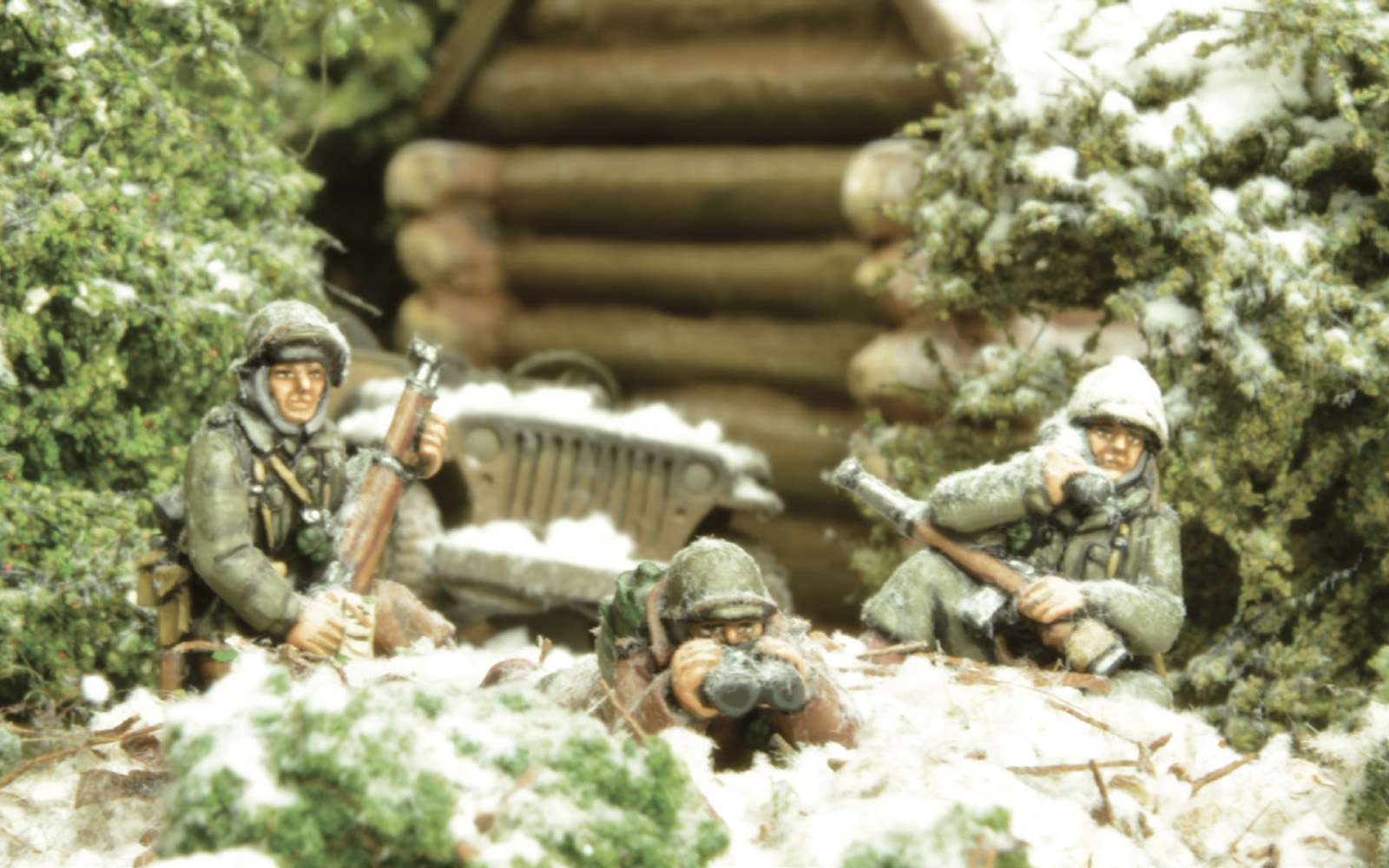
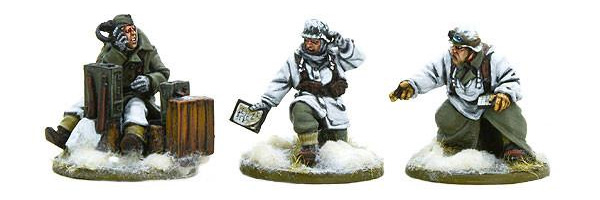
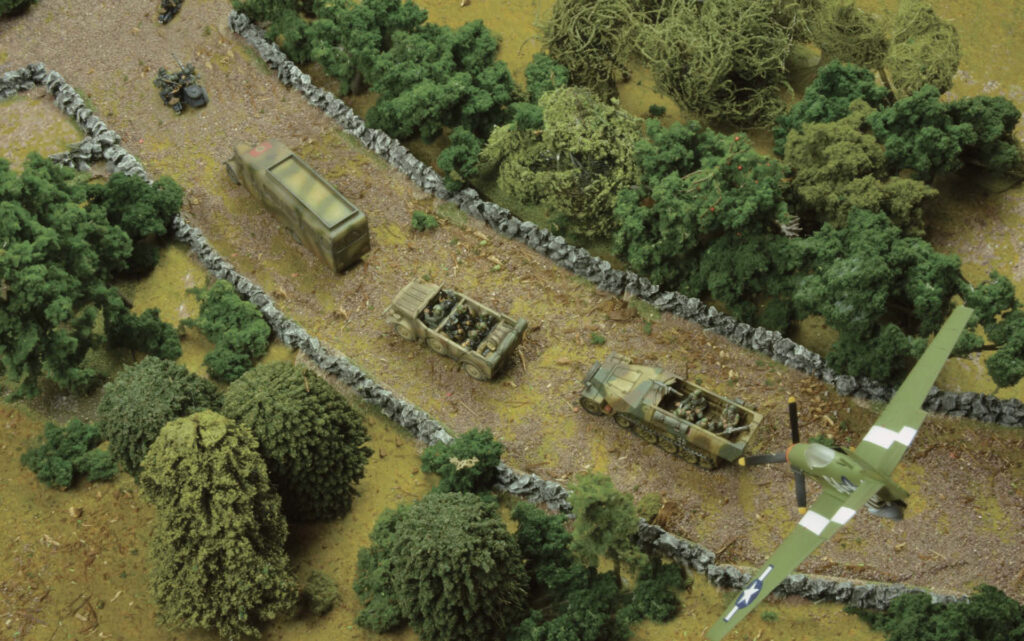
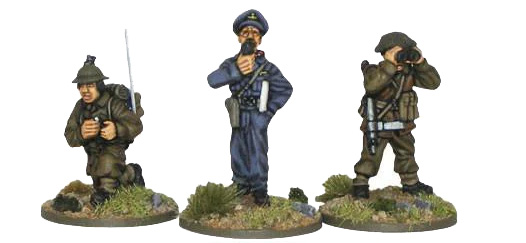
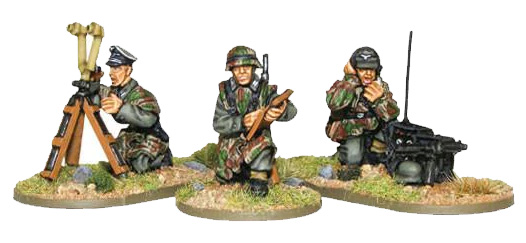
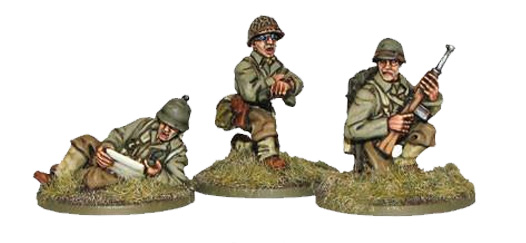
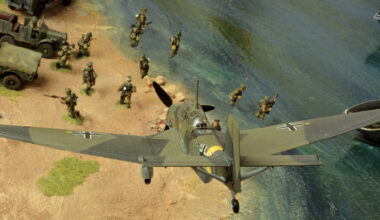
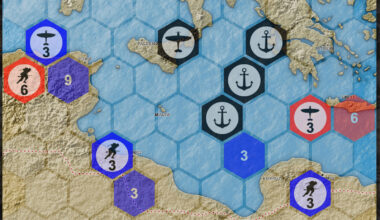
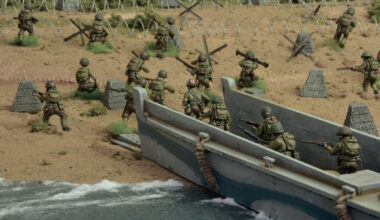
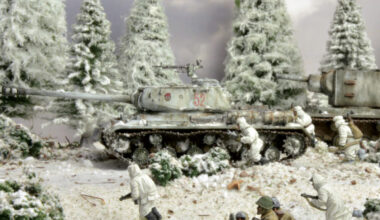
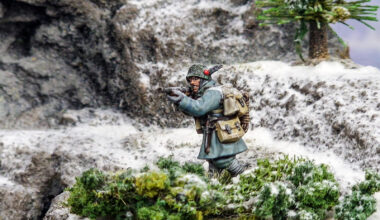
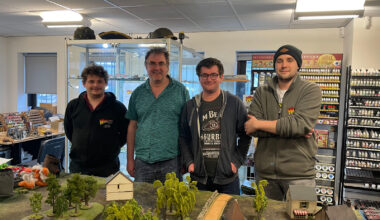
1 comment
Forward Observers should be able to:
1: Be a vehicle with the recce rule (I think any vehicle with the recce rule should be able to act as a spotter if the artillery piece purchased a spotter)
2: Act as the spotter for other artillery IF that artillery has purchase a spotter (which should be a single soldier with a radio or binoculars within 6″ of the piece)
As it stands a recon element with a radio should be able to call in air or artillery. Just my thoughts.
Comments are closed.